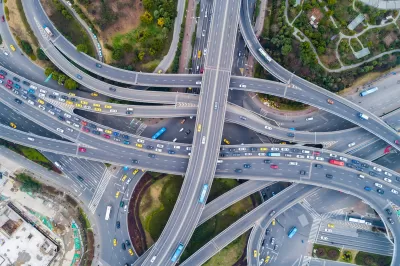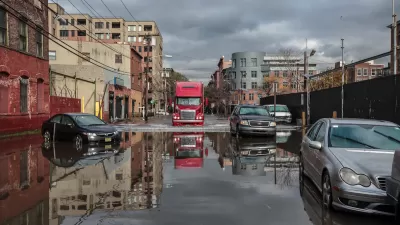Even before President Trump took office, California was not meeting its emissions reduction goals.

California environmental leaders are calling on state agencies to prioritize investing in active transportation and public transit, particularly as the new administration works to dismantle environmental protections and discourage the shift to electric vehicles and renewable energy, writes Damien Newton in Streetsblog California.
In a letter to the California Transportation Commission, California Air Resources Board, Caltrans, and the Department of Housing and Community Development, the group of advocates notes that “California still controls how the state spends its own transportation dollars, and thus is responsible for meeting its own Climate goals.”
Regardless of the federal administration in power, California transportation agencies have continued to prioritize highway building and car-centric development at the expense of public transit and multimodal transportation infrastructure.
The letter includes seven suggestions for actions state leaders can take to meet its climate goals and safeguard its environment. These include making a statewide effort to shift investments away from highway expansion, aligning the transportation budget with the state’s climate action plan, and creating a ‘Plan B’ for emissions reduction goals that compensates for potential reductions in federal support.
FULL STORY: Enviro Leaders: EV’s Won’t Save Us, Invest in Transit and Active Transportation

Trump Administration Could Effectively End Housing Voucher Program
Federal officials are eyeing major cuts to the Section 8 program that helps millions of low-income households pay rent.

Planetizen Federal Action Tracker
A weekly monitor of how Trump’s orders and actions are impacting planners and planning in America.

The 120 Year Old Tiny Home Villages That Sheltered San Francisco’s Earthquake Refugees
More than a century ago, San Francisco mobilized to house thousands of residents displaced by the 1906 earthquake. Could their strategy offer a model for the present?

HSR Reaches Key Settlement in Northern California City
The state’s high-speed rail authority reached an agreement with Millbrae, a key city on the train’s proposed route to San Francisco.

Washington State Legislature Passes Parking Reform Bill
A bill that would limit parking requirements for new developments is headed to the governor’s desk.

Missouri Law Would Ban Protections for Housing Voucher Users
A state law seeks to overturn source-of-income discrimination bans passed by several Missouri cities.
Urban Design for Planners 1: Software Tools
This six-course series explores essential urban design concepts using open source software and equips planners with the tools they need to participate fully in the urban design process.
Planning for Universal Design
Learn the tools for implementing Universal Design in planning regulations.
Ada County Highway District
Clanton & Associates, Inc.
Jessamine County Fiscal Court
Institute for Housing and Urban Development Studies (IHS)
City of Grandview
Harvard GSD Executive Education
Toledo-Lucas County Plan Commissions
Salt Lake City
NYU Wagner Graduate School of Public Service





























